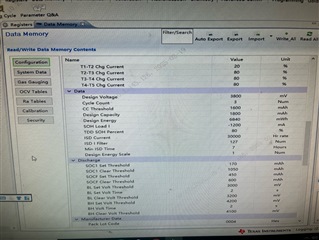Tool/software:
Hi team,
Customer feedback battery pack will randomly trigger ISD fault after completing charge. We record log for your reference. And my question is that is selfdischargecurrent accurate? how often selfdischargecurrent will refresh? How to set ISD threshold is correct?
Below is battery configuration and log data which ISD is triggered.
Below is battery configuration and log data which ISD isn't triggered.
 Battery 1 - ISD untriggered.xlsx
Battery 1 - ISD untriggered.xlsx
Thanks!
Rayna





